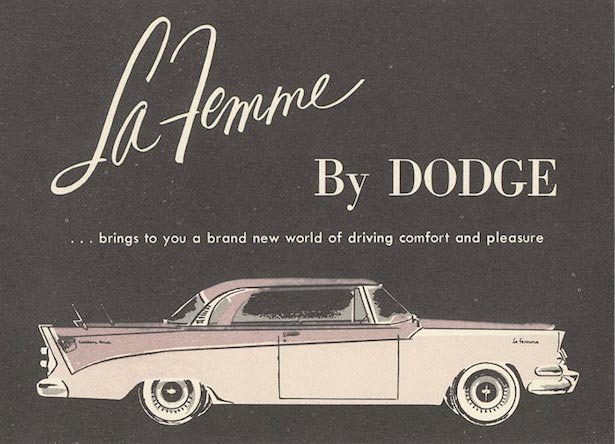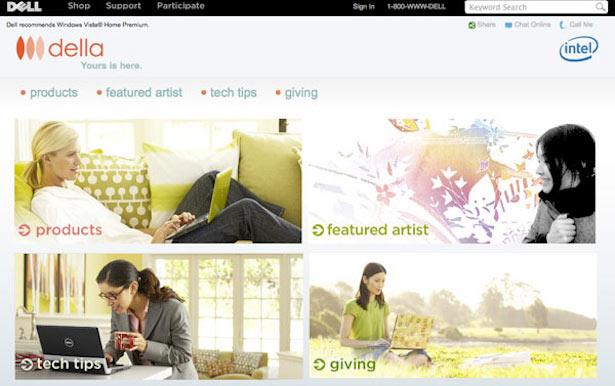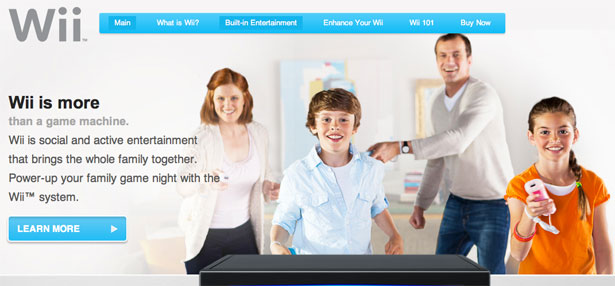Designing experiences for women
Women rule the web, make the majority of purchasing decisions, and are more active on social media channels than their male counterparts. And yet, as designers, we don’t know how to reach this target audience effectively
If you’re reading this, you’re probably male, since the majority of people in the web design field are men. But did you know that the majority of your user base is probably female? And are you sure you’re designing for them in a way that’s effective and not insulting or dismissive? Women are an important audience, and not one to be ignored. Understanding them and designing for them effectively is difficult, but it can be done.
Globally, women now make or influence 65 per cent of global consumer purchases. In the United States, they control 80 per cent of consumer spending. They’re the primary decision makers when it comes to adopting services, using online experiences, and purchasing products. They also dominate social media. 58 per cent of Facebook’s users are women, and 71 per cent of daily active users are women. Even if you have a product or site for men, women are likely influencing whether or not that product or site experience is adopted. That said, are you sure you know and understand women as an audience? Are you reaching them effectively? Do you know how and why behavior varies based upon gender? The solution to reaching a female audience is not “shrinking and pinking” your products or dumbing content down, but rather an understanding of how women engage with products and websites differently than men.
Struggling to understand women as an audience is nothing new. Consider the 1955 Dodge La Femme. In post World War II America, advertisers realised that more households were adopting two cars – one for the husband, and one for the stay at home wife. In an effort to reach this new market, Dodge created the La Femme, a car with a pink exterior and floral interior that came with matching lipstick, purse, rain cape and rain hat. The car was discontinued after two years, since women seemed to want what everyone else wanted in a car: function over frills.

Fast forward to recent years and, unfortunately, designers are still making assumptions about what women want. In 2009, Dell launched a campaign to promote its mini netbook to women, which was accompanied by a microsite called Della. The site touted claims such as "use your mini to track calories, carbs, and protein with ease.” It had a “featured artist” section showcasing singer/songwriters and a “tech tips” section with videos for preparing recipes. Needless to say, many people reacted negatively to the campaign. Dell received quite a bit of backlash online and removed the site in less than two weeks.

Now that we’ve seen a few examples of what doesn’t work, what can we do that actually does work? The Femme Den is a group of industrial designers at Smart Design in New York city. They specialise in designing products and experiences for women. Lucky for us, they’ve published a few guidelines that we can adopt as Web designers. We can also pull some insight from the marketing field. Marketers have understood for years now that women primarily control spending and make household decisions. Holly Buchanan’s blog Marketing to Women Online and the book Don’t Think Pink are two great sources for information on gender and marketing. Here’s a handy list of guidelines aggregated from the sources above.
Emphasise benefits over features or specs
Most women couldn’t care less about horse power, RAM, processors and chips. But they do care about how products help them. Rather than explaining the technical details of your product, tell her how the product is going to solve problems for her or make her life better. If you’re selling her a laptop, tell her how portable it is and how easy it is to manage photos and music.
Craft a holistic story
Most women are empathetic by nature and think on behalf of others when buying or adopting products. They buy and adopt for their children, spouses and partners, but they also do on behalf of extended family, coworkers and friends. If a product or experience can appeal to or extend to others in her life, be sure to tell her. A great example is a online calendar that allows her to see and manage her schedule as well as the schedules of her children and spouse or partner.
Another great example is the Nintendo Wii. Almost anyone can play and enjoy the Wii. If you were selling a Wii or a Wii game to women, you might want to tell them that everyone in the home can enjoy it. And beyond that, visitors – including friends, relatives, and neighbors of all ages – can enjoy it when they come over. If you don’t like your in-laws, stick them in the finished basement with the Wii so they can entertain themselves. Okay, that last one’s a stretch, but you get the idea.

Consider the full experience
Any marketing person will tell you that women pay close attention to every aspect of your brand. Let’s say that you’re a retailer, and your in-store experience is as top notch as it gets. That’s wonderful, but if your website is frustratingly difficult to use and useless at fulfilling her needs, she’ll notice and remember. Be sure to consider every aspect of your experience from start to finish. She pays attention and certainly shares her thoughts about negative experiences with others.
Culturally, we’ve been conditioned to associate women with frills, the color pink, and dumbed down content. But women are multi-dimensional people who demand useful and fulfilling experiences. Be sure to understand this crucial audience and how their needs and behaviours differ from that of men. If you’d like to learn more, check out the 2010 ComScore report Women on the Web: How Women are Shaping the Internet. Femme Den also published a series of articles on Gender and Design. Together we can make the web more useful for everyone, including women and not a splash of pink is required.
Daily design news, reviews, how-tos and more, as picked by the editors.

The Creative Bloq team is made up of a group of art and design enthusiasts, and has changed and evolved since Creative Bloq began back in 2012. The current website team consists of eight full-time members of staff: Editor Georgia Coggan, Deputy Editor Rosie Hilder, Ecommerce Editor Beren Neale, Senior News Editor Daniel Piper, Editor, Digital Art and 3D Ian Dean, Tech Reviews Editor Erlingur Einarsson, Ecommerce Writer Beth Nicholls and Staff Writer Natalie Fear, as well as a roster of freelancers from around the world. The ImagineFX magazine team also pitch in, ensuring that content from leading digital art publication ImagineFX is represented on Creative Bloq.
